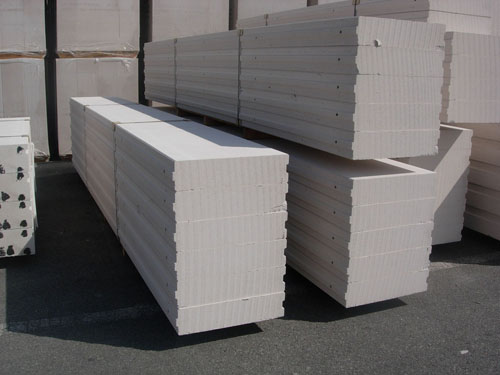Autoclaved Aerated Concrete (ACC)
Autoclaved Aerated Concrete (ACC) is a thermally insulated concrete based material. It is used in both internal and external construction. This is relatively a new product that is being integrated into the construction process.
Advantages and Disadvantages of Autoclaved Aerated Concrete
Autoclaved aerated concrete is quick and easy to install mainly because the material can be sanded, routed or cut to size at the construction site using just standard carbon steel power tools. When autoclaved aerated concrete is used, it can be covered with siding such as brick or vinyl or even stucco to keep the elements away from it.
There are many advantages and disadvantages of autoclaved aerated concrete that are listed below.

Advantages of Autoclaved Aerated Concrete
The advantages of autoclaved aerated concrete are listed below.
- Environmentally Friendly: When used, it helps to reduce at least 30% of environmental waste as opposed to going with traditional concrete. There is a decrease of 50% of greenhouse gas emissions. When possible, using autoclaved aerated concrete is a better choice for the environment.
- Energy Saver: It is an excellent property that makes it an excellent insulator and that means the interior environment is easier to maintain. When it is used, there is usually not a need for any supplementary insulation.
- Great Acoustics: When you think of concrete, you do not consider it to be excellent for acoustics, however autoclaved aerated concrete has excellent acoustic performance. It is able to be used as a very effective sound barrier.
- Fire Resistant: Just like with regular concrete, ACC is fire resistant. This material is completely inorganic and not combustible.
- Great Ventilation: This material is very airy and allows for the diffusion of water. This will reduce the humidity within the building. ACC will absorb moisture and release humidity; this helps to prevent condensation and other problems that are related to mildew.
- Non-Toxic: There are no toxic gases or other toxic substances in autoclaved aerated concrete. It does not attract rodents or other pests nor can it be damaged by such.
- Lightweight: Concrete blocks that are made out of ACC weigh about one-fifth of typical concrete. They are also produced in sizes that are easy to handle for quick construction.
- Accuracy: The panels and blocks made of autoclaved aerated concrete are produced to the exact sizes needed before they even leave the factory. There is less need for on-site trimming. Since the blocks and panels fit so well together, there is a reduced use of finishing materials such as mortar.
- Long Lasting: The life of this material is extended because if is not affected by harsh climates or extreme changes in weather conditions. It will not degrade under normal climate changes either.
- Quick Assembly: Since it is a lightweight material and easy to work with, the assembly is much quicker and smoother. This increases production time when on-site.
Disadvantages of Autoclaved aerated concrete
The major disadvantages of autoclaved aerated concrete are listed below.
- The production cost per unit for ACC is higher than other ordinary concrete.
- Number of manufacturer is limited. So, cost will drastically increase in places far from the manufacturer and need to travel a long distance.
- It is not as strong as conventional concrete.
- Very few contractors who are familiar with autoclaved aerated concrete.
- Construction with autoclaved aerated concrete may will need special permission.
- Environmentally friendly.

Dear Sir,
I would like to add another major disadvantage of AAC blocks.
Their water absorption is very high. With this their expansion on absorbing water and contraction on loosing moisture bring cracks in structure. Secondly with prolonged exposure to moisture, the material disintegrates. Thirdly, the strength is reduced considerably when it is wet.
Please reconsider the climatic conditions in proposed area.
It is not true that water absorption is very high. Due to its low weight, percentage figure of weight of absorbed water appears high. Going by volume, the figure is not high. Compressive strength does come down in wet condition, but AAC Blocks should not be used in wet condition.
AAC block mrkt vry good for trade.
If at all AAC absorb moisture ,it can be taken care by applying putty & paint there off.
very good article. clear and specific. Thumbs up for that !!
But Since when “environmentally friendly ” is a disadvantage for building materials.?
I have a question – can AAC /ACC be used with pile foundation .? Is it sustainable for beach construction.?
AAC Blocks should not be used below ground level. It should be used for parts above ground.
Very much in line with Rajesh Singla’s comments, and 7 years later, this concrete has a 30-year expected life. It is now being rapidly removed from all UK governmental buildings, with schools and hospitals up and down the UK forced to close with immediate effect because of structural concerns and the risk of unpredictable failure. In the UK this is now a condemned building material.